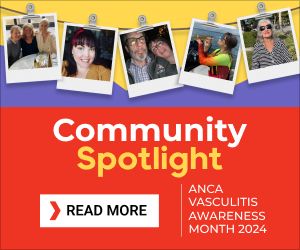US clinicians excited by Tavneos’ potential to cut steroid use: Report
But accessing approved AAV treatment is a challenge, survey finds

Physicians in the U.S. are excited about the potential of Tavneos (avacopan), an approved treatment for people with ANCA-associated vasculitis (AAV), to reduce the use of corticosteroids, a type of steroid medication, in this patient population.
That enthusiasm is due to the safety concerns associated with the long-term use of such medicines, which have led clinicians to cite a need for steroid-sparing treatments. However, according to these U.S. doctors, accessing Tavneos has been a challenge since its approval in autumn 2021.
These are among the findings of AAV MarketVue, a market research report conducted by Reach Market Research that collected and analyzed the views of more than two dozen physicians with experience in treating AAV patients.
“To not require steroids would be very good, and that was the purpose of the [Tavneos clinical] trial,” one rheumatologist was quoted as saying in a Reach press release announcing the survey findings.
According to Meghana Pandit, a Reach analyst, “To supplant current therapies, newer agents must be able to induce long-term remission, reduce corticosteroid burden, and prevent relapses.”
In survey, physicians cite need for steroid-sparing treatments
AAV is an autoimmune disorder in which an out-of-control inflammatory attack from the immune system causes damage to blood vessels. While AAV was once considered a life-threatening disorder, modern therapies have substantially improved outcomes.
The overarching goal of current AAV treatment is to suppress the immune system, repressing the inflammatory attack that drives the disease. Two therapies are approved in the U.S. for AAV: Nucala (mepolizumab) and Tavneos.
Nucala was approved in 2017 for eosinophilic granulomatosis with polyangiitis, a rarer form of AAV, as an add-on therapy to corticosteroids. Tavneos has been available since 2021 for adults with severe active microscopic polyangiitis and granulomatosis with polyangiitis, the two most common forms of AAV.
To gain critical insights into the AAV market, Reach analyzed the responses of 26 U.S. physicians to an online survey, conducted in January. Among them were rheumatologists — physicians specialized in autoimmune, inflammatory, and musculoskeletal conditions — nephrologists, or kidney specialists, and pulmonologists, who are specialists in treating lung disorders.
One-hour, in-depth interviews also were conducted with three rheumatologists, one pulmonologist, and one nephrologist. All of the participants were paid an honorarium.
According to these physicians, only 10% of AAV patients do not respond to initial treatments, which typically involve corticosteroids in addition to rituximab or cyclophosphamide. Also, more than 80% of patients achieve remission, frequently with maintenance therapy.
However, maintaining long-term remission is often challenging: about four in 10 patients were reported to relapse after one year, and nearly 50% will require further aggressive induction treatments to try to achieve remission again.
While corticosteroids reduce immune and inflammatory responses and lessen AAV activity and relapses, they can cause substantial side effects, ranging from weight gain to mood swings and insomnia, especially when used long term.
Consistently, more than 60% of survey respondents reported that the main unmet need in AAV is availability of effective, steroid-sparing induction and maintenance treatments. This was followed by a need for longer disease remission and lower relapse rates, and reduced disease activity and organ involvement.
Originally developed by ChemoCentryx and later acquired by Amgen, Tavneos is an immunosuppressive oral therapy that was shown to be superior to steroid treatment at promoting long-term remission. Tavneos was tested in more than 300 patients a Phase 3 trial called ADVOCATE (NCT02994927).
The treatment was also found to significantly lower patients’ reliance on glucocorticoid treatment over a year.
Tavneos only available through specialty pharmacies
When asked about their impression about AAV approved therapies, nearly 70% of the physicians rated Tavneos’ ability to reduce corticosteroid use as “impressive,” and about 60% reported being “impressed” by its dosing and efficacy. Lower proportions of respondents (between 42% and 50%) said the same of Nucala.
“The main reason why we’re so excited about [Tavneos] in the field is that it was really positioned to take the place of glucocorticoids,” one rheumatologist said.
The physicians’ experiences using Tavneos have generally been positive. One rheumatologist said: “Most patients are actually responding relatively quickly and I have been able to taper off of steroids quickly as well.”
The therapy also has important implications for the development of future treatments, experts noted, with one rheumatologist saying Tavneos has “rewritten the book on clinical trials in this disease.”
“I think the days of adding something to rituximab and glucocorticoids and trying to show better responses are kind of over because it’s going to be very hard to show a benefit, and I think everyone is wanting to get rid of glucocorticoids in this disease, and now that’s a really possibility,” that rheumatologist added.
The main reason why we’re so excited about [Tavneos] in the field is that it was really positioned to take the place of glucocorticoids.
Still, the physicians noted that accessing the new therapy can be difficult. Approvals take time and Tavneos is only available through certain specialty pharmacies, so it commonly takes a few days or weeks to get the therapy after it’s prescribed.
“It is often hard to prescribe because it is hard to get outside of certain specific specialty pharmacies so it took us a while to figure out all these little fine points regarding how to get our hands on the drug relatively quickly,” a rheumatologist said.
Other areas of concern included burdensome dosing — Tavneos is taken as three capsules twice daily — and the price, typically costing around $2,695 for 30 capsules.
“It is a crazy number of pills and frankly the price is completely off the charts. I don’t know how they made that calculation, but it seems completely unreasonable,” a rheumatologist said.









